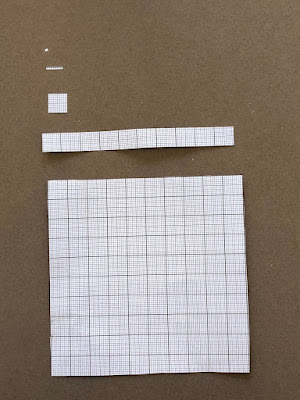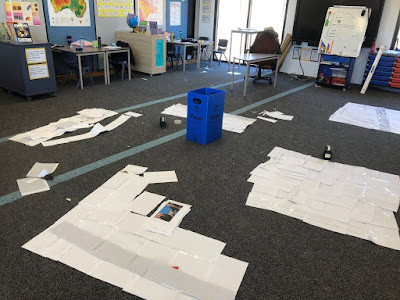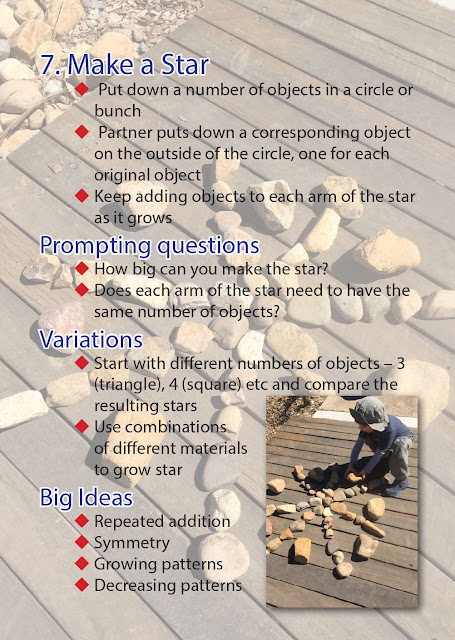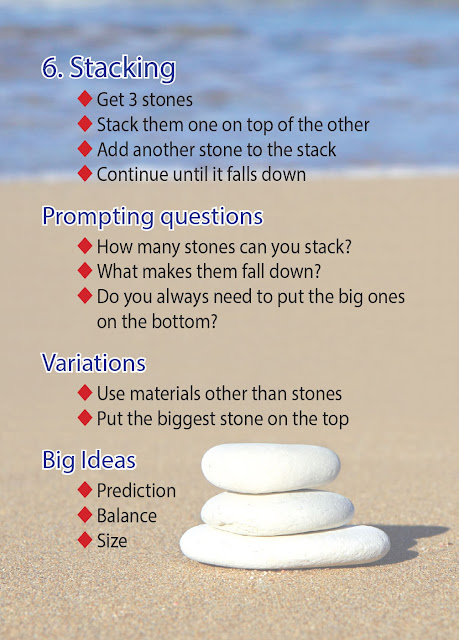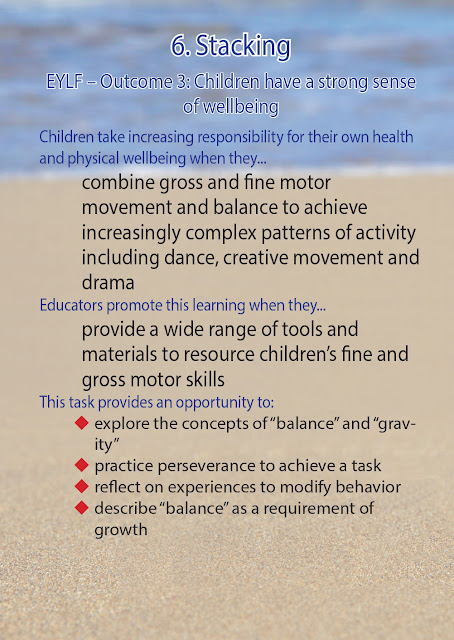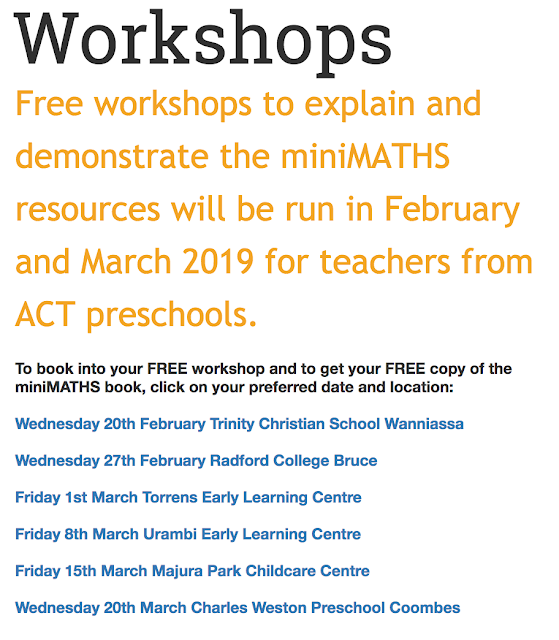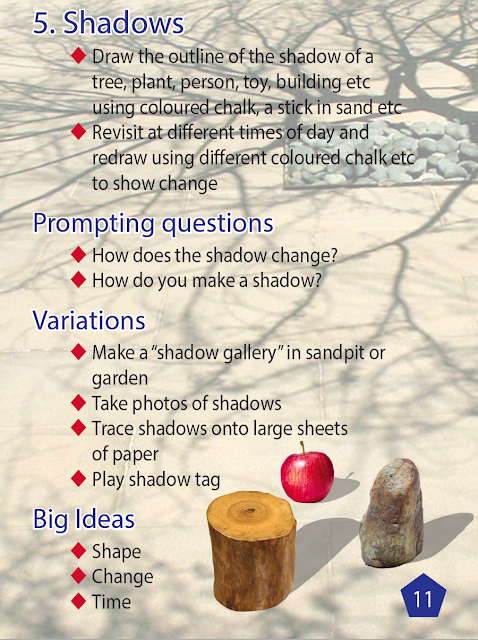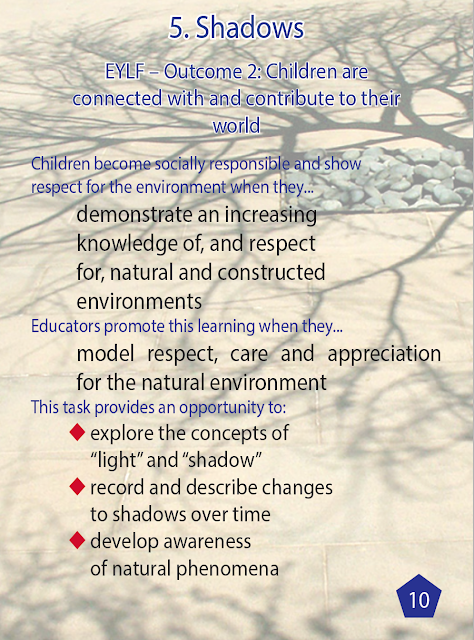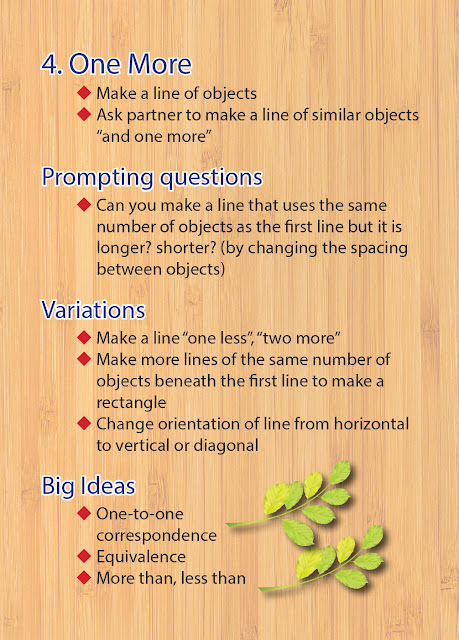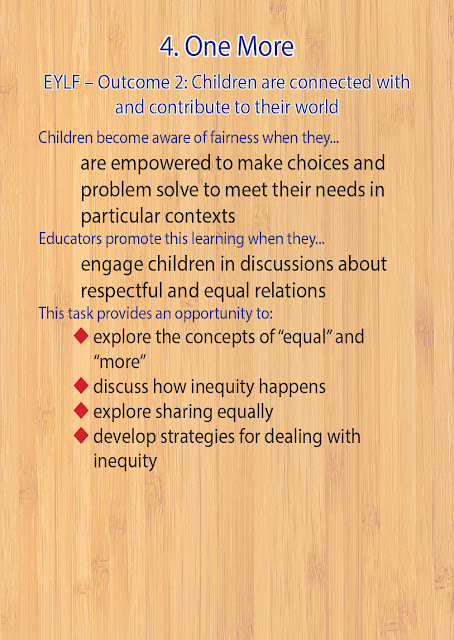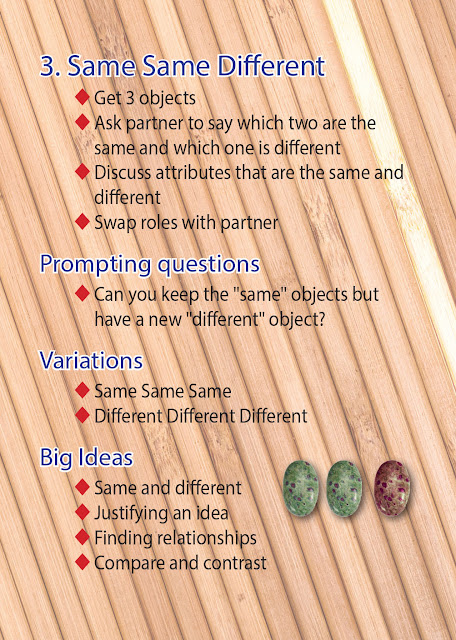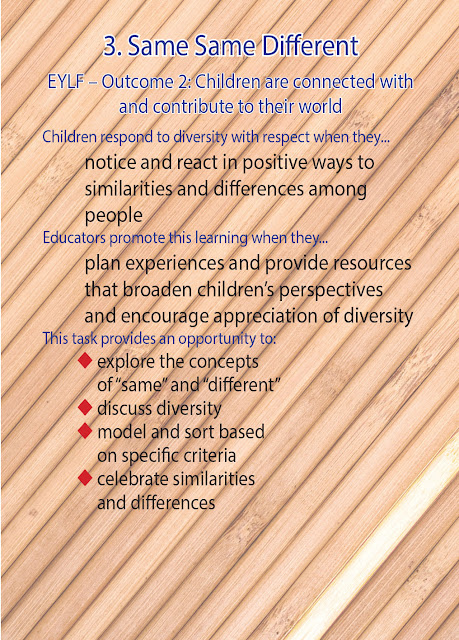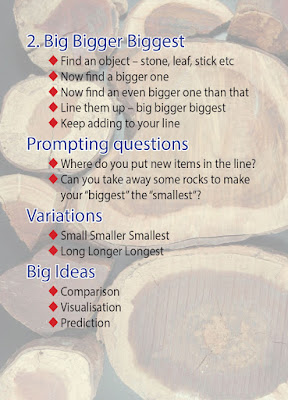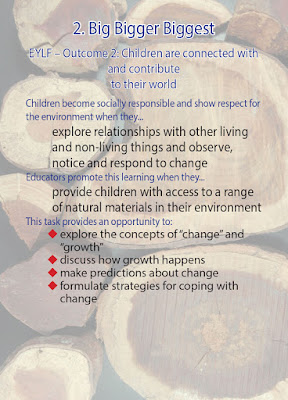The Background
Following our successful application in 2018 for an ACT Government Nature Play grant, I submitted an application on behalf of the Canberra Maths Association for another grant in 2019. As we had planned in 2018, we again proposed to:- write 10 inquiries/tasks/lessons/resources to be used outside in the natural environment
- run a series of workshops with preschools to share these resources
I am very pleased to announce that we were again successful in our application and got the grant. A group of about 10 interested preschool teachers met together one afternoon earlier in the year at Radford College, my school, and brainstormed some ideas. It was a productive time. I went away with pages of notes that I wrote up as the miniMaths Book 2.
The 10 tasks we came up with were:
1. Which hand? - an exploration into probability
2. Hands and feet - measuring with informal units
3. Symmetrical mandala - building a symmetrical pattern
4. Leftovers - what to do with remainders when dividing
5. There and back - giving directions to describe a journey
6. Pattern dance - using symbols to represent the parts of a dance
7. Flower count - collecting data about flower colours and representing the data as a "graph"
8. Shape detective - finding shapes in nature
9. Treasure sort - sorting objects based on shared and unique features
10. Fill the pot - how many cups of sand does it take to fill a saucepan?
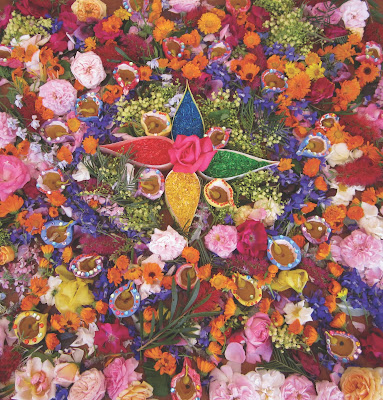
A beautiful flower mandala created by the wonderful students
at Orana Steiner School
The 10 tasks make up Book 2 of the miniMaths program. Every preschool and early learning centre in the Australian Capital Territory will receive copies of the book early in 2020.
The 10 tasks have also been uploaded as a website that is available to anyone, not just ACT teachers:
http://www.minimaths.com.au
Over the next week or so, I will post a bit more detail about each of the 10 tasks. Maybe you will find them useful. I would be keen to hear any feedback.
And any Canberra teachers - keep an eye out for the miniMaths workshops rolling out over January and February.
Regards.

